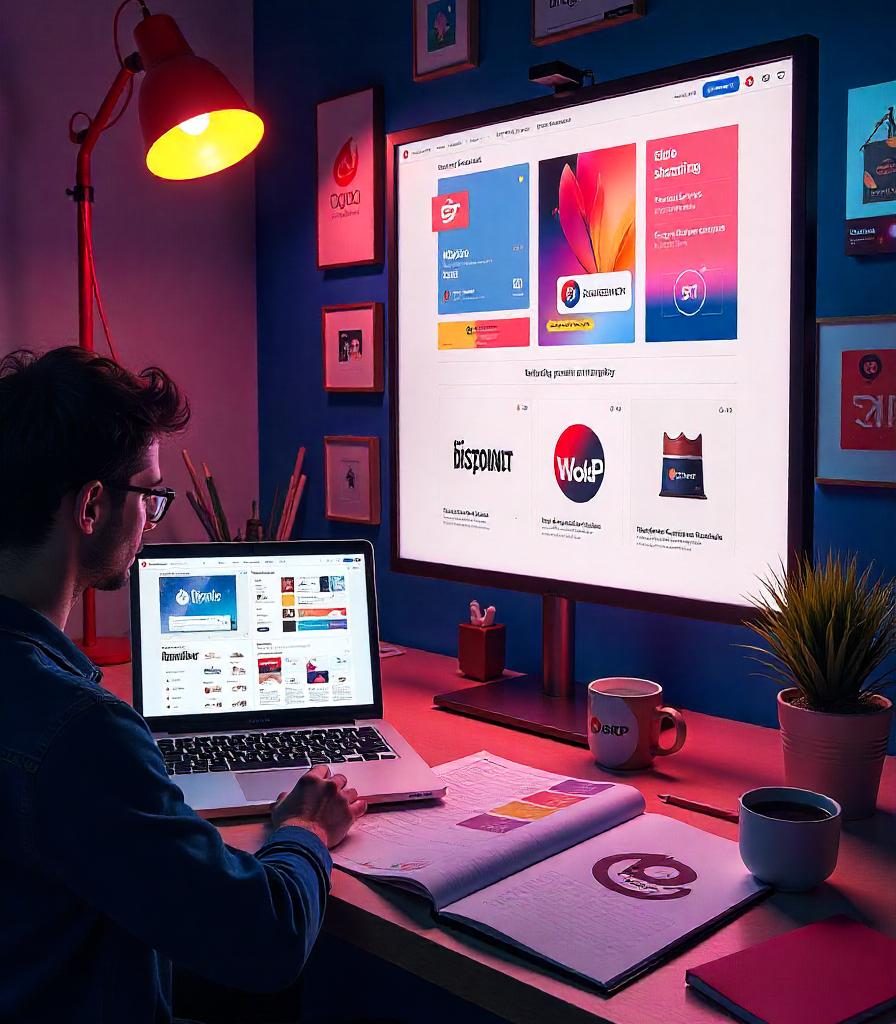
The Power of Visual Storytelling in Marketing
In the bustling world of modern marketing, where attention spans are dwindling and content overload is the norm, visual storytelling has emerged as a powerful tool for brands to connect with their audiences. It’s not just about showcasing products or services; it’s about weaving narratives that evoke emotions, inspire action, and foster lasting connections. Let’s delve into what makes visual storytelling so compelling and how it can transform your marketing strategy.
What Is Visual Storytelling?
Visual storytelling combines compelling visuals with narratives to communicate messages effectively. It leverages imagery, videos, graphics, and design elements to convey a story that resonates with viewers. Unlike traditional forms of storytelling, which rely heavily on text, visual storytelling uses the power of sight to create immediate and memorable impressions.

Why is Visual Storytelling Important in Marketing?
1. Captures Attention and Engages Emotionally
In a digital world flooded with content, grabbing and holding attention has become a significant challenge. Humans are naturally drawn to visuals—studies show that people are 60,000 times more likely to remember information presented visually compared to text alone. Images and videos engage emotions more effectively, helping brands create memorable experiences that leave lasting impressions.
2. Increases Retention and Comprehension
When you combine storytelling with visuals, you offer a richer, more engaging way to communicate your message. People process images much faster than text, meaning they can comprehend and retain information much more effectively.
3. Enhances Brand Identity
A brand’s identity is more than just its logo or product offering. It encompasses the narrative that surrounds the brand, the emotions it evokes, and the relationships it builds with its audience. Visual storytelling allows brands to express their core values, vision, and personality in ways that text alone cannot.
4. Boosts Social Media Engagement
Social media platforms are highly visual, with images and videos getting significantly more engagement than text-based posts. Visual content stands out in crowded feeds and encourages users to stop scrolling. Furthermore, visual storytelling on platforms like Instagram, Pinterest, and YouTube allows brands to tell a story in a way that feels natural and engaging, fostering a sense of community among followers.
Graphic Designing

Graphic designing is the art and practice of creating visual content to communicate messages effectively. It involves combining elements like typography, images, colors, and layouts to craft designs that capture attention, convey information, and evoke emotions.
Graphic designing is essential in branding, marketing, and storytelling, as it helps businesses and individuals visually express their identity and connect with their audience. It blends creativity with technical skills, making it both an art form and a practical communication tool in today’s digital age.
Graphic Designing Tips
- Keep It Simple: Avoid clutter and focus on clean, straightforward designs. A minimalist approach often leads to more effective communication.
- Understand Your Audience: Tailor your design choices to resonate with the target demographic. Consider their preferences, interests, and cultural context.
- Use Contrast Wisely: Ensure good contrast between elements to improve readability and create visual interest. Use contrasting colors, shapes, and sizes for emphasis
- Proper White Space: Give your design room to breathe. White space enhances clarity, balance, and allows key elements to stand out.
- Choose Fonts Carefully: Limit your font selection to a maximum of two or three. Make sure they align with your brand and are legible across different mediums.
- Use a Consistent Colour Palette: Stick to a harmonious colour scheme to establish visual cohesion. Avoid overwhelming your design with too many colours.
- High-Quality Images: Use crisp, high-resolution images that align with your message. Avoid pixelation and ensure the visuals enhance your design.
- Experiment with Textures and Patterns: Add depth and visual interest to your design by incorporating subtle textures or patterns but avoid overdoing it to maintain focus.
Branding with Graphics

Branding with Graphics is an essential element in building a strong, memorable identity for any business or organization. Graphics serve as visual representations of your brand’s personality, values, and message, making them a powerful tool to connect with your audience.
Effective branding graphics also include visual storytelling, which simplifies complex messages using infographics, charts, or animations. This not only makes information engaging but also ensures better audience retention. For physical branding, appealing graphics on packaging, merchandise, and promotional materials enhance your visibility and reinforce your image.
In the digital world, branding graphics are crucial for social media, websites, and digital ads. Consistency across platforms, tailored to each channel’s requirements, ensures your brand remains recognizable and professional.
The Role of Graphics in Branding

Graphics are the visual language of a brand. They communicate the essence of the brand without using words. A strong logo, for example, instantly tells customers who you are and what you stand for. It’s often the first thing people see, so it needs to be memorable, unique, and instantly recognizable.
Colours are another important graphic element. Different colours evoke different emotions—blue is often associated with trust, red with energy, and green with sustainability. Consistent use of colours in all branding materials helps reinforce your brand’s personality.
Building a Visual Identity

Branding with graphics is about more than just choosing a logo and colors. It’s about creating a cohesive visual identity that tells your brand’s story. This identity should be reflected in all customer touchpoints, from your website to packaging and social media.
Effective branding with graphics ensures that your brand is instantly recognizable, communicates your message clearly, and resonates with your target audience. When done right, graphics can transform a brand from simply a business into a memorable experience.
Conclusion
Visual storytelling is no longer a luxury in marketing; it’s a necessity. As audiences become more visually driven, brands that can effectively use visual content to tell compelling stories will be the ones that stand out. By tapping into the power of emotions, simplifying complex ideas, and enhancing brand recall, visual storytelling allows brands to create deeper connections with their audience. In a world full of distractions, mastering the art of visual storytelling can give your brand a competitive edge, driving engagement, loyalty, and long-term success.









